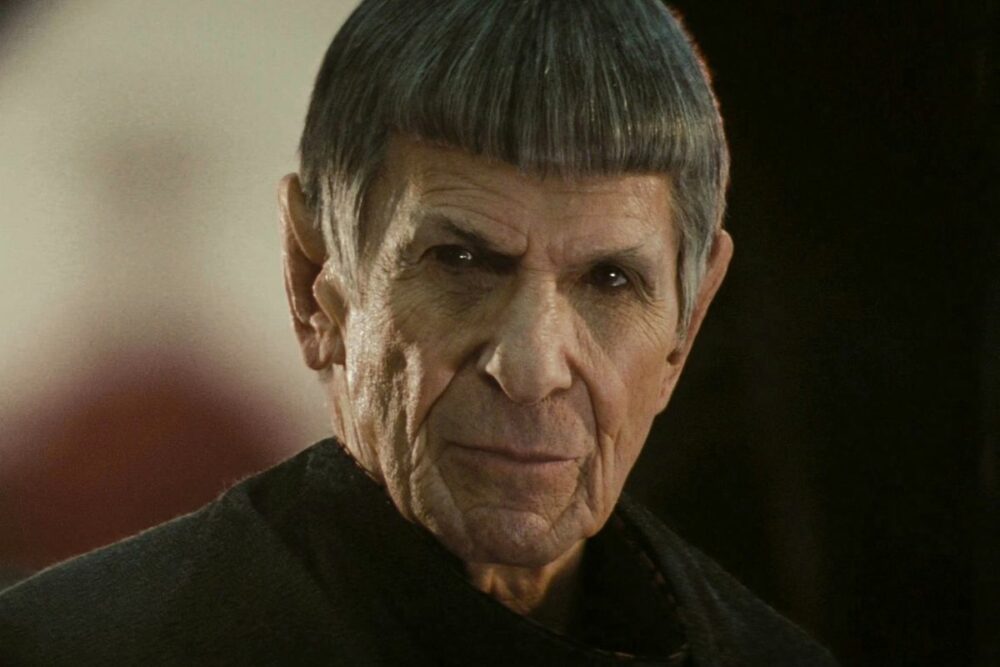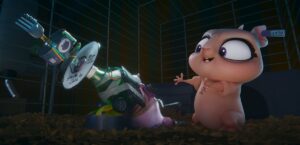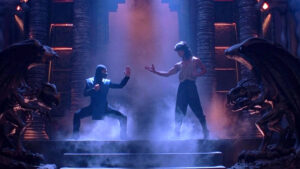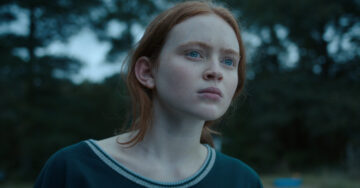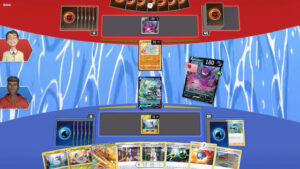Debate is a time-honored tradition for Star Trek fans. Was Janeway right about Tuvix? (Yes.) Is Star Trek: Discovery ruining the franchise with all that crying? (No, it’s great; get in touch with your feelings.) Who’s the best captain in Starfleet? (The greatest captain is Picard. But the best captain is Sisko.)
What’s not debatable is that Spock is the most important person in the history of the Federation. A mixed-species science officer turned diplomat turned timeline traveler, Spock’s impact boasts an unrivaled longevity within the Star Trek franchise, born from a combination of dramatic necessity and fan appeasement.
And it’s a good thing he’s stuck around, because Star Trek is finally ready for him. Beleaguered as Star Trek: Discovery’s journey has been from first season to final, it has shepherded the franchise into a new stage of Star Trek’s endless stumble toward utopia. And Star Trek: Strange New Worlds has shown that Star Trek can at long last allow its most famous alien crewmember to be just as relatable as his human colleagues.
The Great Spock
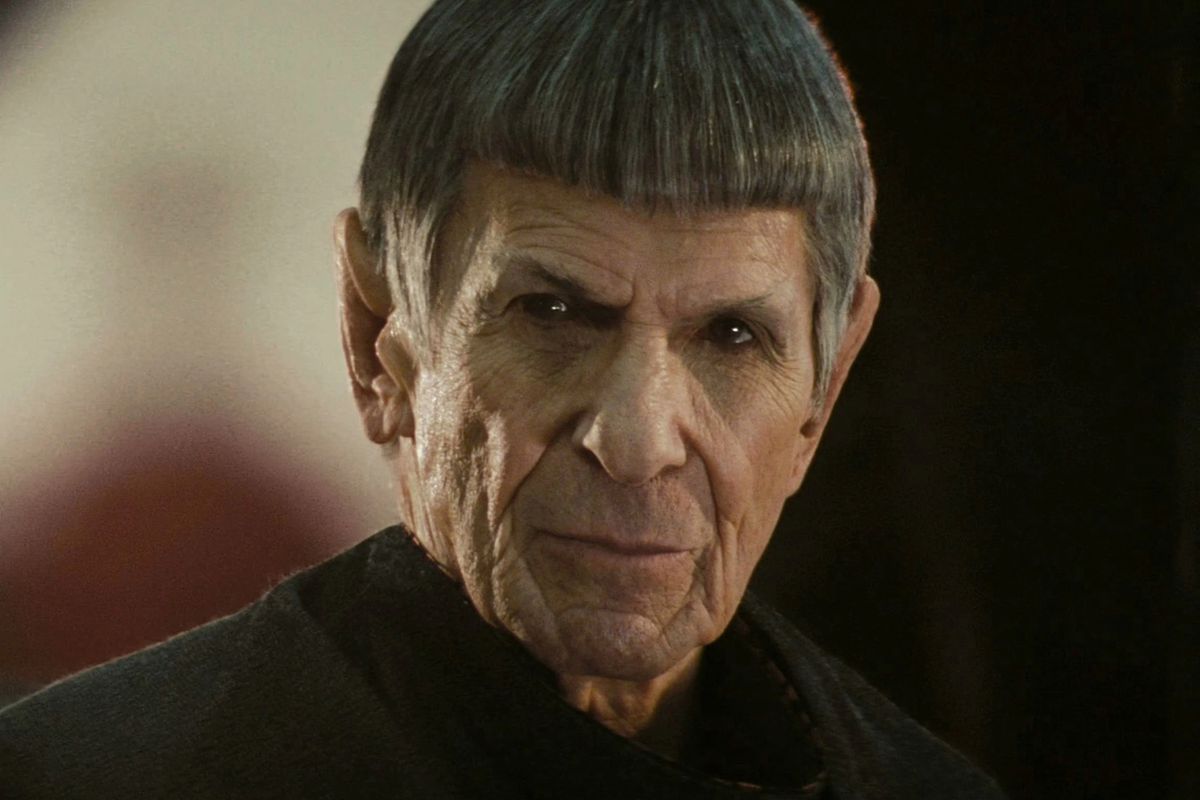
“The Great Spock” is how Spock is known within the Federation just a decade after his death, and for good reason. He was a foster brother to Captain Michael Burnham, who would reunite the Federation in the far future. He was second-in-command to the legendary Kirk, and instrumental to ending the cold war between the Federation and the Klingon Empire and reunifying Vulcan and Romulus. And then, in the Kelvin timeline, he ensured the success of Kirk’s enterprise in a whole ’nother universe.
And while this extravagant series of canon events is the fault of decades of Star Trek writers and directors working in tandem, you can’t really blame them. For one thing, Leonard Nimoy inarguably had the range, in a way that set him apart from most of the original cast of the original Star Trek.
This is not a slam on the rest of the TOS cast. The world of midcentury cinematic sci-fi was by necessity one of broad emotion, wide eyes, and huge physical gestures. An earnest dramatic bombast that filled the gap between plywood sets, body paint, acres of lamé, trick camera work, and crude latex masks and the audience’s immersion.
But starting almost immediately upon TOS’ cancellation in 1969, the tone of sci-fi cinema and television evolved like Tom Paris at warp 10 (that is, it quickly became almost unrecognizable). Boundary-pushing films like 2001: A Space Odyssey, along with adventures like Star Wars and full-blown dramatic horror like Alien, conditioned audiences to expect more subtlety and immersion from the genre (William Shatner and Ricardo Montalbán’s scenery chewing in Wrath of Khan notwithstanding).
By the time Star Trek returned to television with 1987’s The Next Generation, it was an arena for a different kind of actor entirely, one fitted to the quieter, more humanistic emoting expected from modern dramatic television. It’s a testament to Nimoy’s range, not an insult to his peers, to say that he was one of the only members of The Original Series who could hold up their own end in scenes with, say, Patrick Stewart, in a Next Generation episode where Spock mind melds with Picard to experience his late father’s hidden feelings of love for his son. If there’s another actor with Nimoy’s range in TOS, it’d be DeForest Kelley (who even guest starred in the pilot of The Next Generation). But Bones is… I mean, there’s no such thing as a “Doctor’s Salute.” Spock is the mascot of Star Trek. And if you doubt it, you just have to look at every time since The Next Generation that the franchise has taken a big risk.
When 2009’s Star Trek needed someone to hold down a new cast playing old characters in a significant departure from The Original Series’ story and tone, it turned to Nimoy and Spock. And when Star Trek: Discovery placed itself in an era nearly contemporary with Kirk’s Enterprise, it was with a tantalizing reveal of Spock’s secret foster sister, and, after a rocky first season, a recast Spock himself, proving that the character’s effect now stands independent of Nimoy’s contributions: Tossing Spock into a story has become Star Trek’s go-to way to say, “Hey… don’t worry… we’re still Star Trek!”
But something else happened in this long process of Star Trek reinventing itself. It grew from a metaphor about embracing the other to a metaphor about being the other. Spock was the most important person in Starfleet, and Star Trek finally figured out that his personhood is important.
The original alien
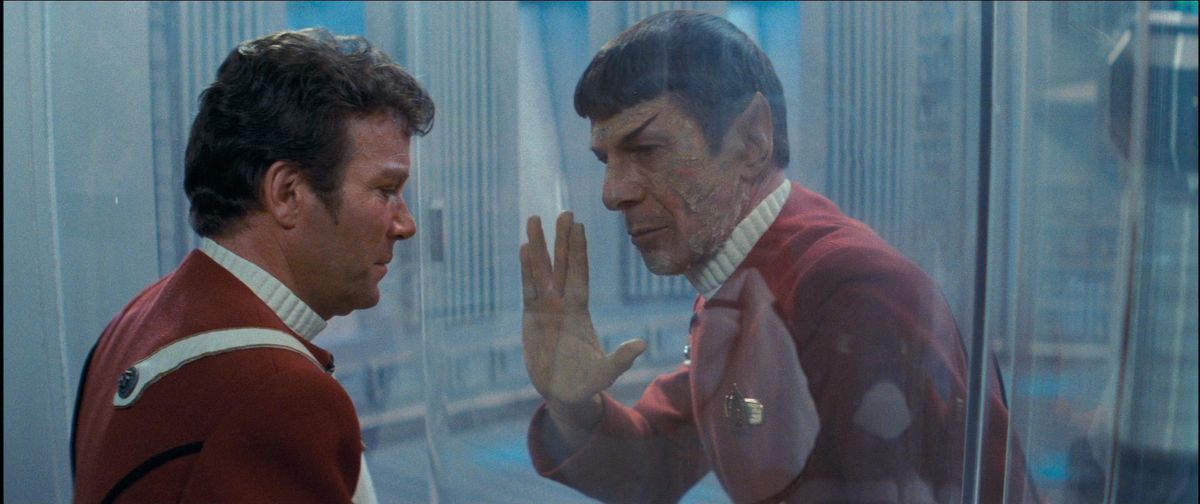
Spock’s struggle with his combined human and Vulcan heritage has been the central tension of his character since Trek’s inception. But The Original Series placed the emphasis firmly on the alien. TOS Spock’s most iconic moments are things like the calm, utterly Vulcan way in which he sacrifices his life in Wrath of Khan, the unexpected brilliance of his smile when he realizes Kirk is alive at the end of “Amok Time,” and a whole episode where we find out that he must have sex with a specific person in the next week or he will literally die.
That he was more alien than human was the whole point. Spock provided a fictional culture clash to contrast against Star Trek’s transgressive lack of real culture clash — an American television series made in the mid-1960s in which men and women, white, Black, Japanese, and Russian people cheerfully cohabitated and co-worked. Spock is Star Trek’s original embraced (or tolerated) alien other.
No matter what kind of eyes you think Kirk is giving his lanky, loyal first officer, Spock was shown through an outside point of view. This continued as Spock was refitted as a legitimizing force, as main characters like Jean-Luc Picard, Zachary Quinto’s younger Kelvinverse Spock, and Michael Burnham had to prove themselves worthy to stand in his shadow. It didn’t stop him from becoming a point of identification for generations of fans — from the moment he showed his pointy ears, Jewish fans, female fans, queer fans, biracial fans, neurodivergent fans, and many more besides have identified with Spock in spite of his positioning as the strange alien on a crew full of humans. But with Strange New Worlds, Star Trek has finally shown that it’s ready to remove “in spite of” from the equation.
From Spock’s first scene in the show — set in a Vulcan restaurant full of Vulcans on the planet Vulcan — Strange New Worlds has been committed to presenting even his alien aspects from within rather than without. The show’s first Spock feature episode, “Spock Amok,” dips directly into his internal insecurities about his most intimate relationship; next, in “The Serene Squall,” it points out that his struggle with his seemingly binary identity is emphatically not singular. The show as a whole has offered tremendous and repeated insight into Spock’s loving but doomed betrothal to T’Pring, a character TOS introduced as an aggrieved ex who forces him to take part in a traditional alien death match against his best friend.

And in just this season alone, we’ve seen Spock sweat through a meeting with his intolerant in-laws while turning to his understanding human crewmates for help. In “Subspace Rhapsody,” Spock basically says the whole point out loud, when Uhura attempts to console him after Nurse Chapel pretty much broke up with him via an elaborate musical dance number.
“Relationships can be difficult, Spock. And you’re Vulcan —” she begins, clearly about to say “she’s human.” An implication that their relationship was destined to be even more difficult than usual.
Spock cuts her off. “But I am also human,” he says bluntly. Left unsaid: I am human, just like Chapel. And just like you. Spock and Chapel — and the rest of the crew — are more alike than they are different.
Even in a scene as momentous as his first meeting with James Kirk, Strange New Worlds roots Spock in his own environment, among his own crew. Kirk is the odd one out on this Enterprise. Star Trek has come full circle on a journey of small steps, taken with Spock, and Worf and Data, and the Doctor and Seven of Nine, and Odo and Quark, and Saru, the first nonhuman character to captain a Star Trek series’ crew. Each step brought the franchise to a place where it could more perfectly voice the message of tolerance at its heart.
Star Trek has an old habit, only recently and finally discarded by the modern franchise, of playing light humor out of its crew’s diversity. Did you know that Betazed weddings are performed in the nude? Ho ho ho, better hit the gym, Captain. Did you know Klingons eat live worms? And Commander Riker actually likes it? Yech! Just like everything else about Star Trek’s aliens, it dates back to the original one, the franchise’s mascot. Peel the latex and lamé away from Dr. McCoy’s undying quest to catch Mr. Spock in a moment of open emotion, anathema to his way of life, and you might start wondering where Starfleet’s HR department is. That kind of thing is relatable when you’ve been the odd one out, but not from McCoy’s side.
Generation after generation, Trek fans have pointed at alien characters that were created to represent a clashing perspective with the human majority around them and said, “Their othered experience is like my human one.” The whole point of the franchise is that outsiders should be embraced, and Star Trek has finally evolved enough to stop framing them from the view of the inside. To let us see ourselves in aliens not in spite of original intention, but because of it.
In 1966, Leonard Nimoy was Spock. Sixty years later, Star Trek has finally put the audience in his shoes on purpose — today, Spock is all of us.
- SEO Powered Content & PR Distribution. Get Amplified Today.
- PlatoData.Network Vertical Generative Ai. Empower Yourself. Access Here.
- PlatoAiStream. Web3 Intelligence. Knowledge Amplified. Access Here.
- PlatoESG. Automotive / EVs, Carbon, CleanTech, Energy, Environment, Solar, Waste Management. Access Here.
- BlockOffsets. Modernizing Environmental Offset Ownership. Access Here.
- Source: https://www.polygon.com/23824684/star-trek-spock-strange-new-worlds-actors
- 10
- 2000
- 3000
- a
- About
- acres
- actually
- after
- Against
- alien
- Aliens
- alike
- All
- allow
- alone
- along
- also
- am
- American
- among
- an
- anathema
- and
- Another
- apart
- ARE
- Arena
- around
- as
- aspects
- At
- attempts
- audience
- audiences
- away
- back
- BE
- became
- because
- become
- becoming
- been
- besides
- BEST
- Better
- between
- BIG
- Black
- boasts
- body
- bones
- broad
- brought
- but
- by
- CAN
- Cancellation
- Catch
- central
- chapel
- character
- characters
- cinema
- cinematic
- Circle
- clearly
- cold
- Cold War
- colleagues
- combination
- combined
- come
- committed
- Console
- contemporary
- continued
- contrast
- contributions
- could
- created
- Crew
- Culture
- data
- Dates
- death
- decade
- decades
- department
- destined
- DID
- different
- difficult
- directly
- directors
- Diversity
- Doctor
- Doubt
- down
- dr
- dramatic
- each
- eat
- Effect
- either
- Elaborate
- else
- embraced
- embracing
- emphasis
- empire
- end
- enough
- Enterprise
- entirely
- Environment
- episode
- era
- even
- events
- Every
- everything
- evolved
- expect
- expected
- experience
- eyes
- fan
- fans
- far
- fault
- Feature
- feelings
- figured
- filled
- films
- Finally
- find
- firmly
- First
- For
- force
- forces
- foster
- Franchise
- friend
- from
- full
- Full Circle
- future
- Gaming
- gap
- generation.
- generations
- Genre
- Get
- good
- great
- greatest
- Guest
- gym
- had
- happened
- has
- Have
- he
- heart
- help
- her
- heritage
- hidden
- him
- his
- history
- HIT
- hold
- Horror
- How
- hr
- HTTPS
- huge
- human
- Humans
- Humor
- i
- iconic
- Identification
- Identified
- Identity
- if
- ii
- immediately
- immersion
- Impact
- important
- in
- inception
- Independent
- INSIDE
- insight
- instrumental
- Insult
- intention
- internal
- intimate
- into
- introduced
- Is
- IT
- ITS
- itself
- james
- Japanese
- journey
- jpg
- just
- Kelvin
- kind
- kirk
- know
- known
- lack
- last
- late
- later
- left
- Legendary
- leonard
- Life
- light
- like
- likes
- Live
- Long
- longevity
- Look
- LOUD
- love
- Low
- loyal
- made
- main
- Majority
- many
- Masks
- Match
- matter
- mean
- Meeting
- Members
- Men
- Message
- Michael
- might
- mind
- Modern
- moment
- moments
- more
- most
- mr
- much
- musical
- must
- my
- nearly
- needed
- New
- Next
- Nine
- no
- not
- now
- number
- Odd
- of
- off
- offered
- Officer
- Old
- on
- One
- only
- open
- or
- original
- Other
- ourselves
- out
- outside
- own
- paint
- Paramount
- paris
- part
- patrick
- peel
- peers
- People
- perfectly
- performed
- perspective
- physical
- pilot
- place
- planet
- plato
- plato data intelligence
- platodata
- platogaming
- Playing
- Point
- Point of View
- Points
- Polygon
- positioning
- pretty
- Process
- prove
- provided
- purpose
- put
- quest
- quickly
- range
- rather
- Ready
- Real
- really
- reason
- recently
- relationship
- remove
- represent
- REST
- restaurant
- reveal
- right
- Risk
- Rocky
- roots
- Russian
- Said
- say
- says
- scene
- scenes
- Sci-Fi
- Science
- season
- Secret
- see
- seemingly
- seen
- Series
- set
- sets
- seven
- Sex
- Shadow
- she
- should
- show
- showed
- shown
- side
- significant
- since
- sister
- Sit
- small
- someone
- something
- son
- Space
- specific
- Stage
- stand
- stands
- Star
- Star Trek
- start
- Starting
- step
- Steps
- still
- stop
- Story
- success
- such
- table
- Take
- taken
- tandem
- television
- testament
- than
- that
- The
- The Gap
- the world
- their
- Them
- themselves
- then
- they
- thing
- things
- think
- this
- Through
- time
- timeline
- to
- Today
- tolerance
- tom
- touch
- toward
- tradition
- traditional
- tremendous
- turned
- turning
- understanding
- unrivaled
- up
- upon
- us
- via
- View
- Voice
- vulcan
- war
- was
- way
- we
- week
- were
- What
- when
- where
- while
- white
- WHO
- whole
- wide
- Wikipedia
- will
- william
- with
- within
- without
- Women
- wondering
- Work
- working
- world
- Worlds
- Worms
- would
- years
- yes
- you
- your
- zephyrnet
